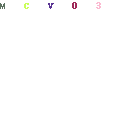Yen set to replace dollar as investors' top choice

NEW YORK: The yen, which had been toppled by the dollar last year as investors' top choice to fund carry trades, looks set to reclaim the throne in 2010.
The recent spike in U.S. bond yields, coinciding with a rally in the dollar against the yen, is flagging a return to the yen to fund carry trades -- the risky strategy of using a low-yielding currency to purchase assets in higher-yielding currencies in the search for better returns.
The rise in U.S. bond yields is making the cost of carry in the dollar more expensive, which should prompt investors to use the yen -- offering lower rates and less volatility -- to wade back into speculative assets.
"I think the yen will reclaim its status as the funding currency of choice in 2010. Even if the Federal Reserve raises rates by 25-50 basis points, that would mean U.S. rates will still be markedly above Japan's," said Richard Franulovich, senior currency strategist at Westpac in New York.
The yen, with its near-zero percent interest rates, was the preferred funding currency for more than seven years. That changed in the summer of 2009 when the cost of benchmark three-month interbank dollar funds fell below that of the yen.
As carry trades depend both on low interest rates and low volatility, the rise in U.S. yields has boosted uncertainty in that market. At the start of December the credit market started to advance the expected timing of a U.S. interest-rate increase, which caused rate differentials to move in favor of the United States versus Japan.
Although financial markets on Friday pared back U.S. rate hike expectations following an unexpectedly weak U.S. non-farm payrolls report for December, the jobs data did not shake overall optimism about the U.S. economy.
In contrast, "deflation remains a major concern in Japan and this means monetary policy will remain on hold and Japanese interest rates will remain extremely low levels," said Jonathan Clark, deputy chief investment officer at FX Concepts, a $12 billion currency hedge fund in New York.
BACK-UP IN U.S. YIELDS
The dollar/yen pair has become more sensitive to movements in bond yields because the currencies are competing as the markets' favored funding unit. Any shift in the yield curve or rate expectations has an impact on both currencies.
Over the past month, U.S. 10-year bond yields rose from 3.2 percent to 3.92 percent by end-December. The rise in yields has underpinned the dollar, which has surged about 9 percent against the yen since late November.
That was driven mainly by implied inflation expectations, analysts said, and rising spreads in credit default swaps, which suggest nervousness in financial markets has eased and risk appetite has increased.
Short-term U.S. interest rates are likely to remain low. That should leave the market dealing with an extremely steep yield curve, which is attractive to buyers of debt. The difference between the U.S. two-year and 10-year yields was near a record on Friday, at about 286 basis points.
src-et





No comments:
Post a Comment